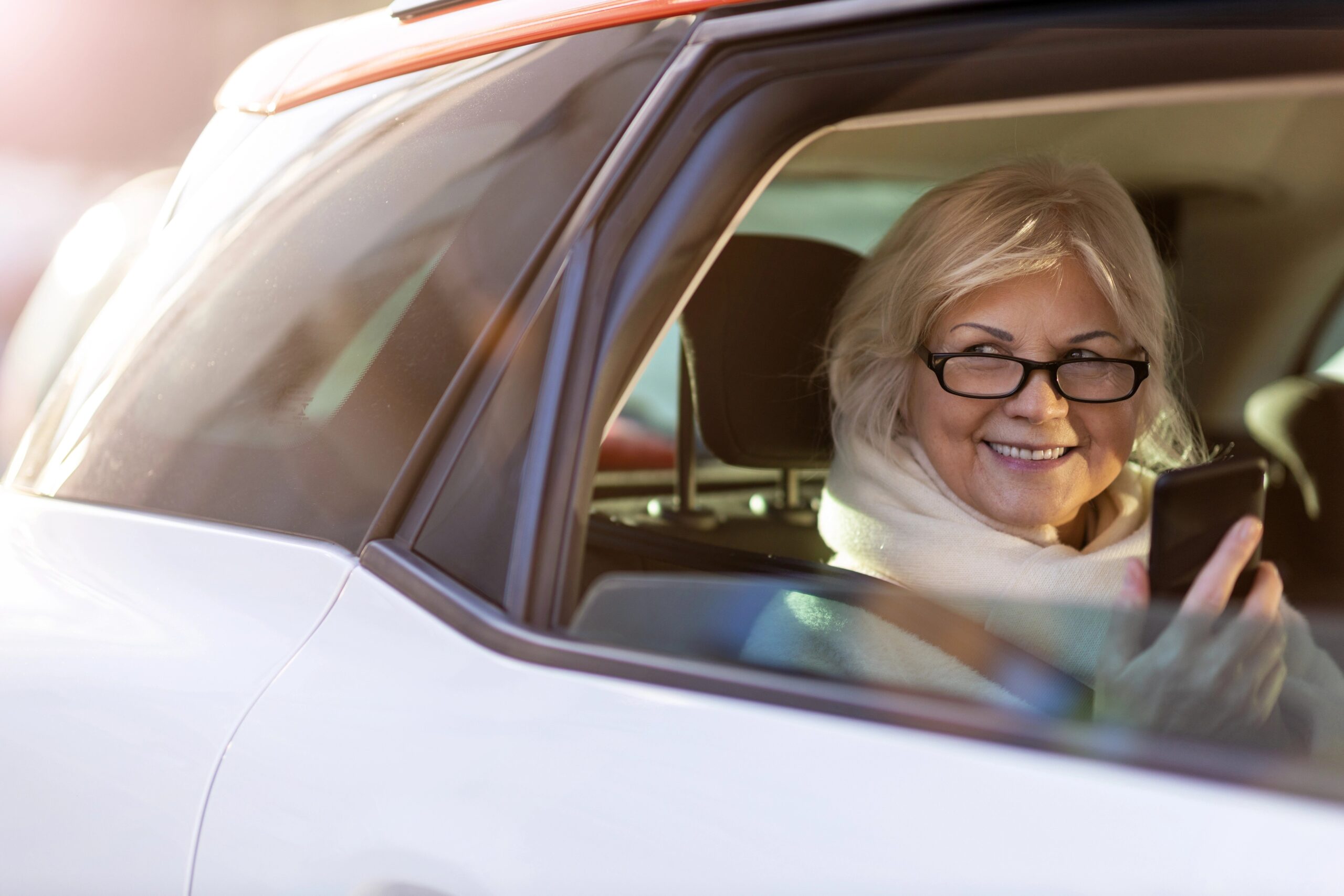Alternative transportation options like buses, trains, taxis and ridesharing apps can reduce isolation, improve mobility and encourage independence for anyone who chooses to not drive. The University of Michigan Health and Retirement Study surveyed a representative sample of adults 65 and older and found that 24% do not have access to a vehicle, 21% reported that they are no longer able to drive, and 52% say they no longer drive long distances. (The percentages overlap.) According to ATI Advisory, 375 MA plans offered transportation for non-medical needs as a special supplemental benefit in 2022, up from 88 in 2020. Ridesharing apps in particular are useful in bridging the ‘last mile problem’ that can exist with public transportation. Below are some of our best strategies for safely using alternative transportation.
4 Alternative Transportation Safety Tips
Hold Onto Rails Whenever Possible
Train and bus rides can be tough, especially when stepping up and down. There have been many cases of people falling over at a rough stop or as they were getting off because they didn’t hold on to the handrails and guardrails around them.
Take advantage of these rails as much as you can while using buses or trains. They’ll ensure you stay balanced and upright throughout your ride and will ensure you’re always safe as you exit. And don’t be afraid to ask the bus driver to use the wheelchair ramp or ‘kneel’ the bus when getting on or off.
Plan Your Route Beforehand
If you’re taking a train or bus to get to a destination, you’ll want to plan your route beforehand. Doing this ensures that you’re familiar with any new place you’re going to, know what’s available within your vicinity, and keeps you comfortable in case you get lost or get off at the wrong stop.
When planning a route, consider:
- How many stops a train or bus has to get to your destination?
- Are you going during the day or at night? Are there any times where the train or bus isn’t running that will affect your route?
- What is the shortest route that you can take?
- If you get lost, can you get on another train or bus immediately?
- Are there any places like grocery stores, convenience markets, etc. that you can go to in case of an emergency while traveling?
Verify Vehicles and Drivers From Rideshare Apps
Whether you’re using Uber, Lyft, or another rideshare service, you’ll want to always verify your driver and their vehicle before stepping foot into a car. Doing this ensures that you’re getting into the right vehicle (and not a stranger’s) and that you’ll be safe throughout your entire ride.
Some ways to ensure verification includes:
- Making sure the driver’s name and their vehicle lines up with the information you have in the rideshare app you’re using
- Asking the driver the name of the person they’re supposed to be picking up (which is you, of course)
- Asking the driver if they can verify the address of where they’re supposed to take you
Let Others Know Your Whens and Wheres
Whenever you get on a train, bus, taxi or rideshare, make sure to let your loved ones know where you’re going, when you expect to be there, and to call or text periodically to make sure you’re fine. Uber and Lyft apps also allow you to share your location, so a friend can virtually follow you along your route.Letting someone know about this information is important because in case of an emergency, they can come help you or provide information as to your destination and why you were going.
Additional Resources
Safety Tips for Riding with Uber
Public Transportation and Your Personal Safety
